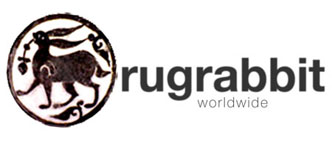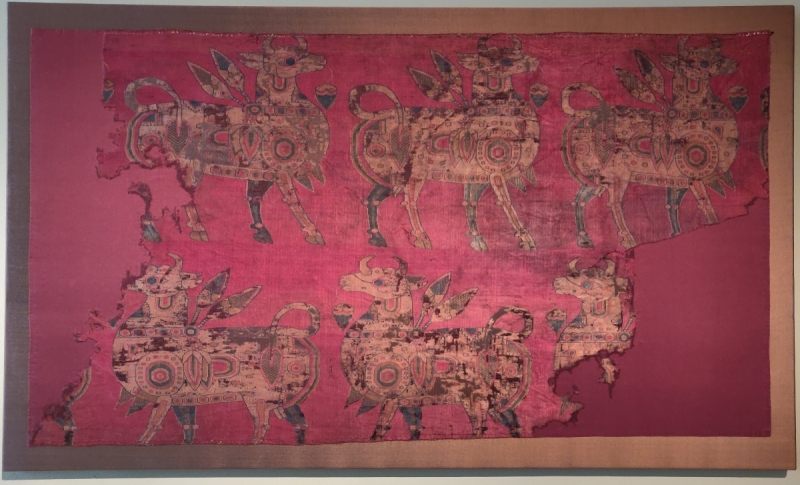
Sogdian Bulls Central Asia, following Sasanian prototypes, probably 7th-8th century AD Silk samite | 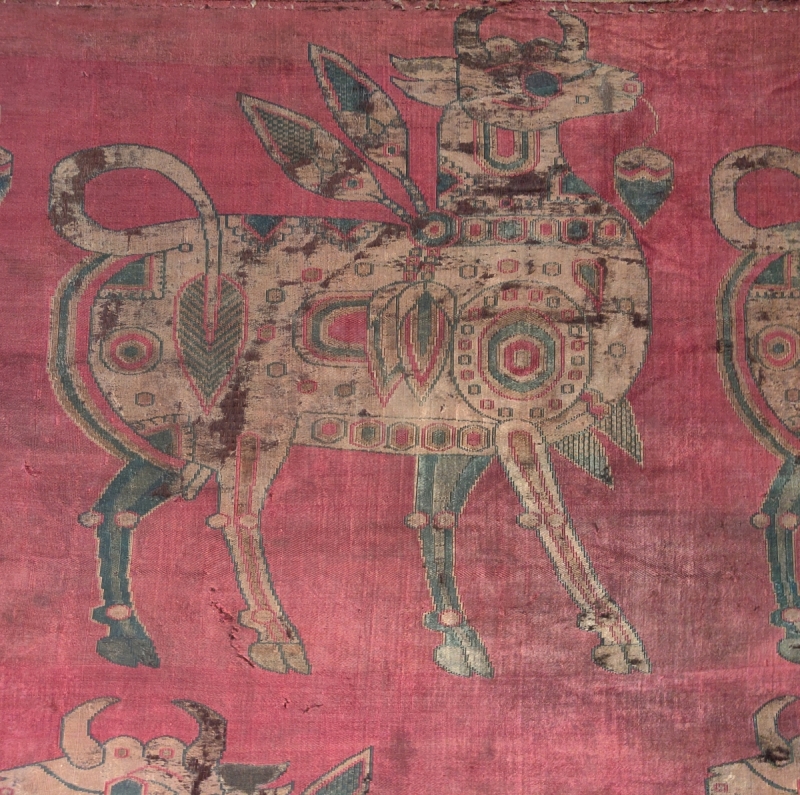 |
| | |
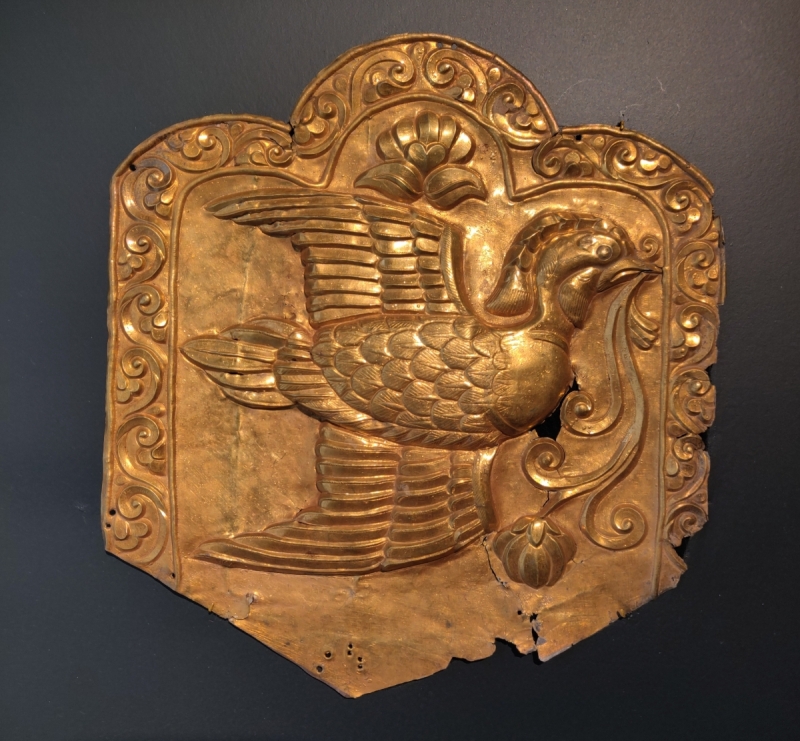 Silver-gilt repoussé plaque depicting a mandarin duck in flight Central Asia, 7th-9th century Repousse silver-gilt | 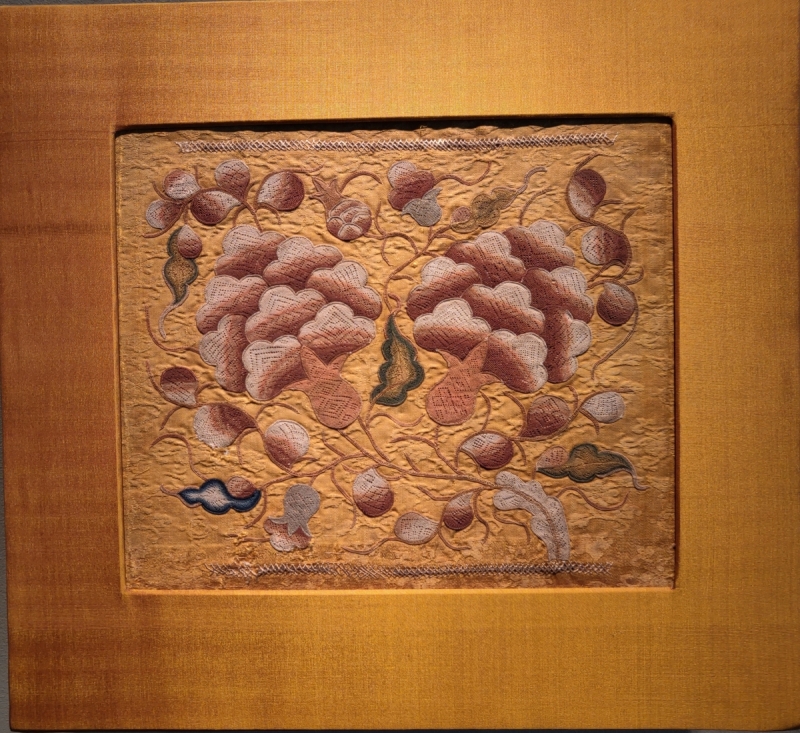 Rare needleloop embroidery with tree peonies Chinese, Yuan dynasty (1279-1368) Needleloop embroidery over pieces of gilded paper (now in worn condition) on yellow satin damask |
| | |
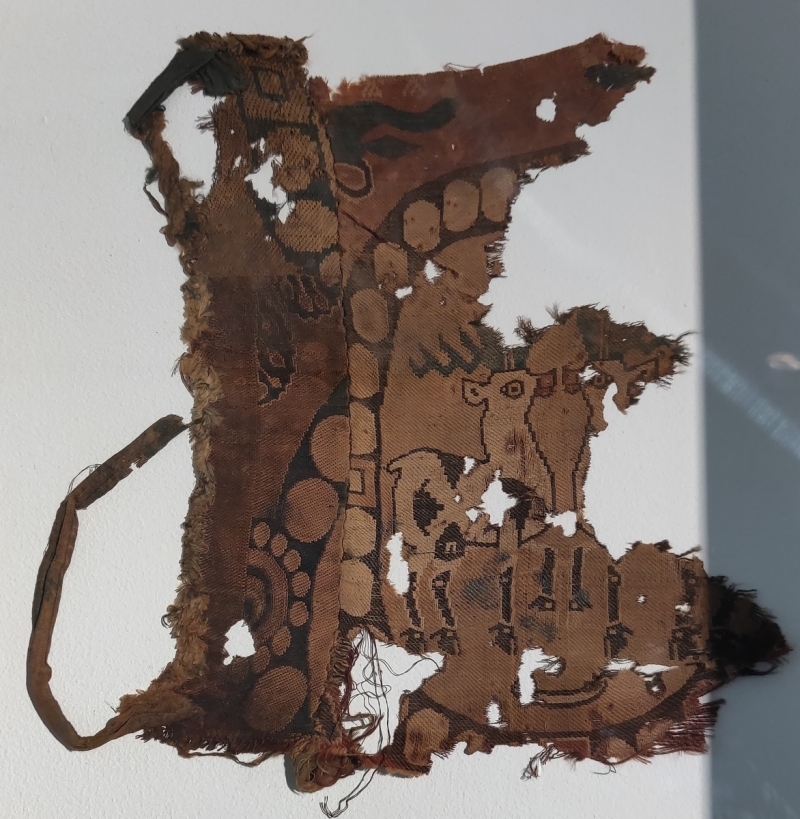 Fragment consisting of pieces of three different polychrome silks sewn together, the largest with a design of paired deer within pearled roundels Probably first half of the 7th century | 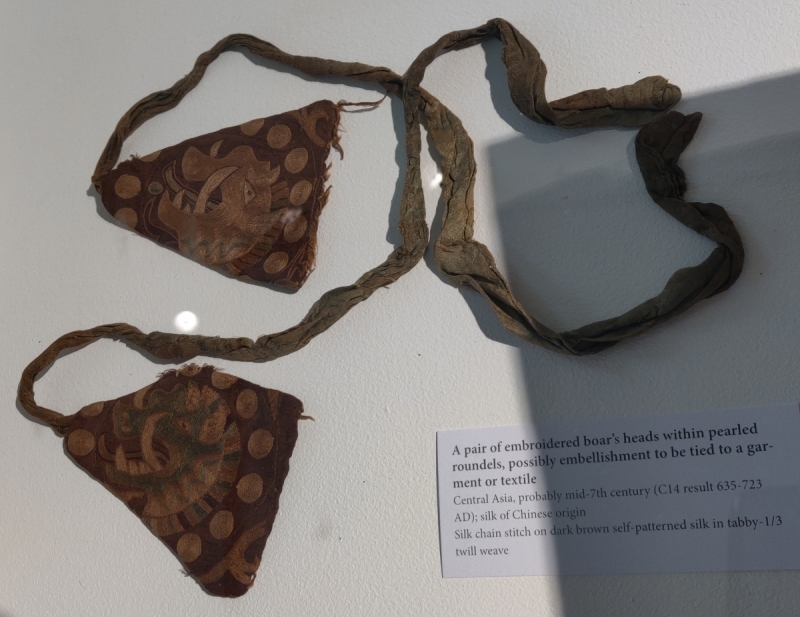 A pair of embroidered boar's heads with pearled roundels, possibly embelishment to be tied to a garment or textile Central Asia, probably mid 7th century (C14 results 635-723 AD); silk of Chinese origin Silk chain stitch on a dark brown self-patterned silk in tabby- 1/3 twill weave |
| | |
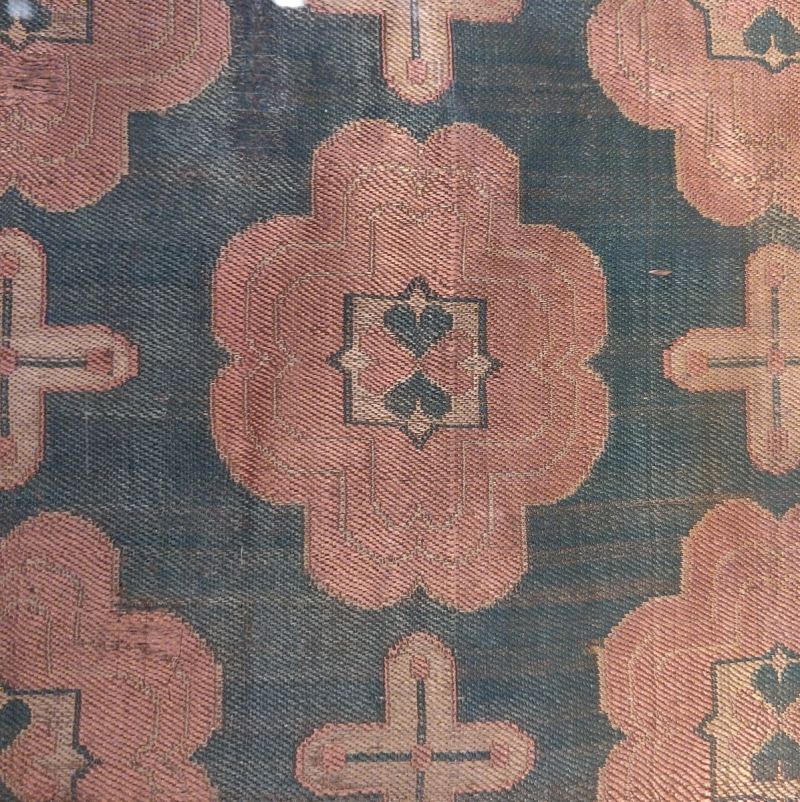
| 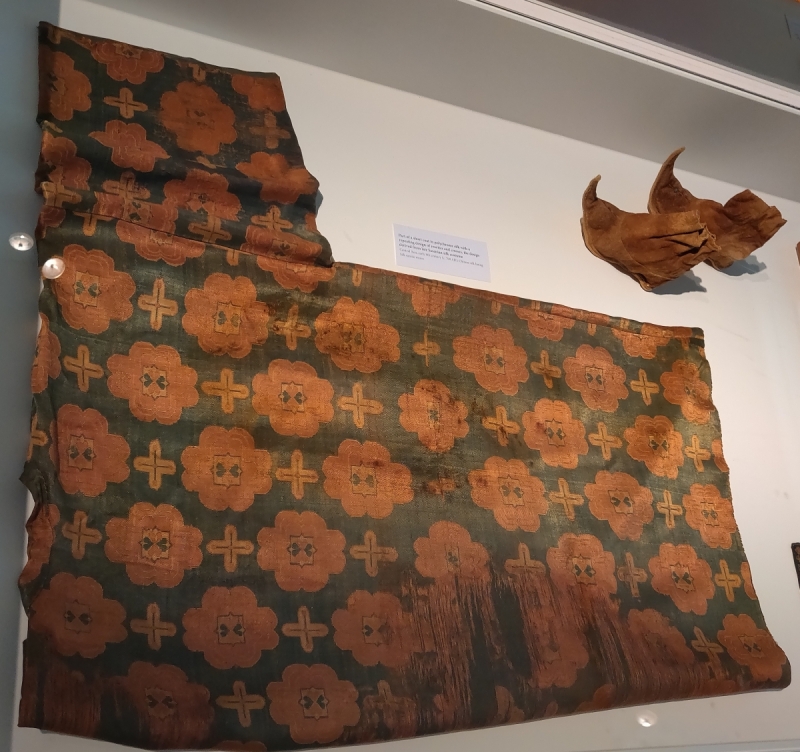 Part of a short coat in polychrome silk with a repeating design of rosettes and crosses, the design derived from late Sasanian silk costume Central Asia, early 8th century (c. 700 AD); Chinese silk lining Silk samite weave |
| | |
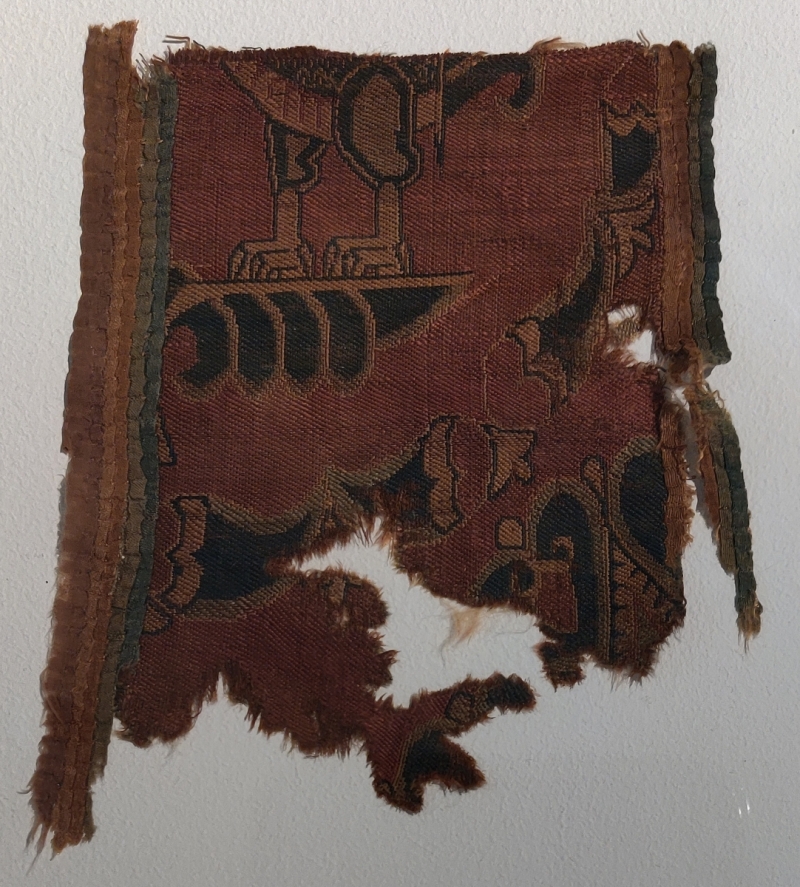 Polychrome silk border fragment depicting the legs and feet of a pheasant within a roundel, flanked either by a 'rainbow' arrangements of appliqué folded strips of plain silk Central Asia, late 8th or early 9th century, Samite weave, plain silk of Chinese origin | 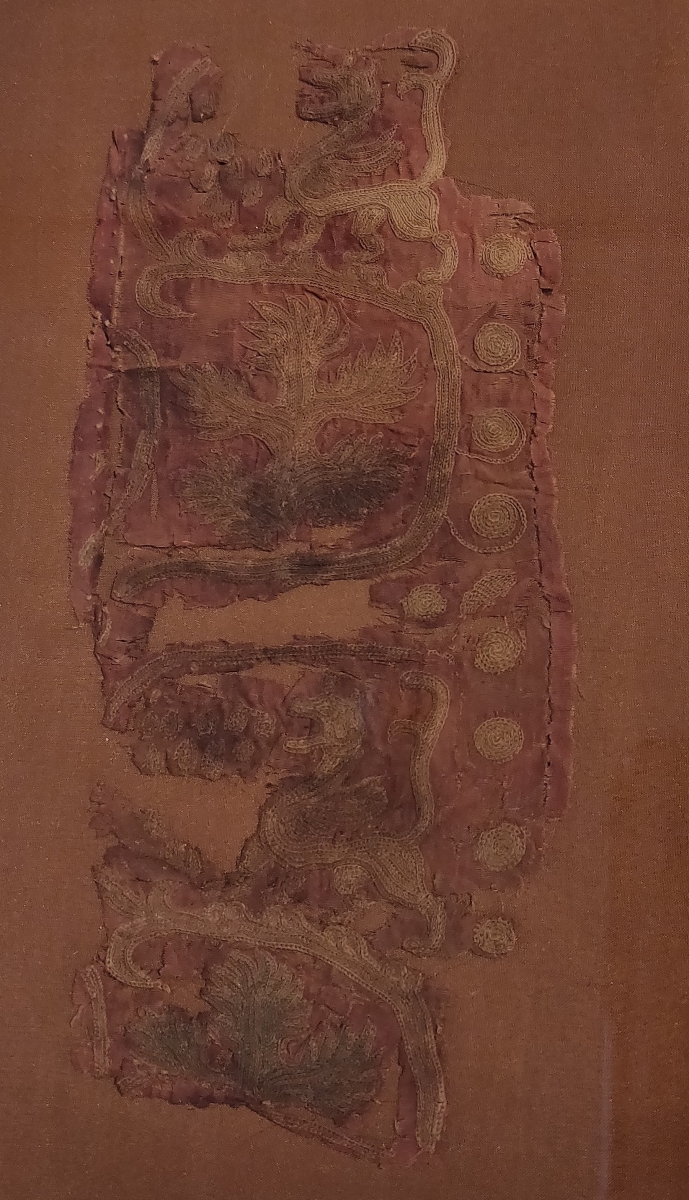 Chinese winged dragons and Hellenistic vine stems Central Asia (Xinjiang), 2nd-4th century AD Silk embroidery, chain stitch on a red silk tabby ground |
| | |
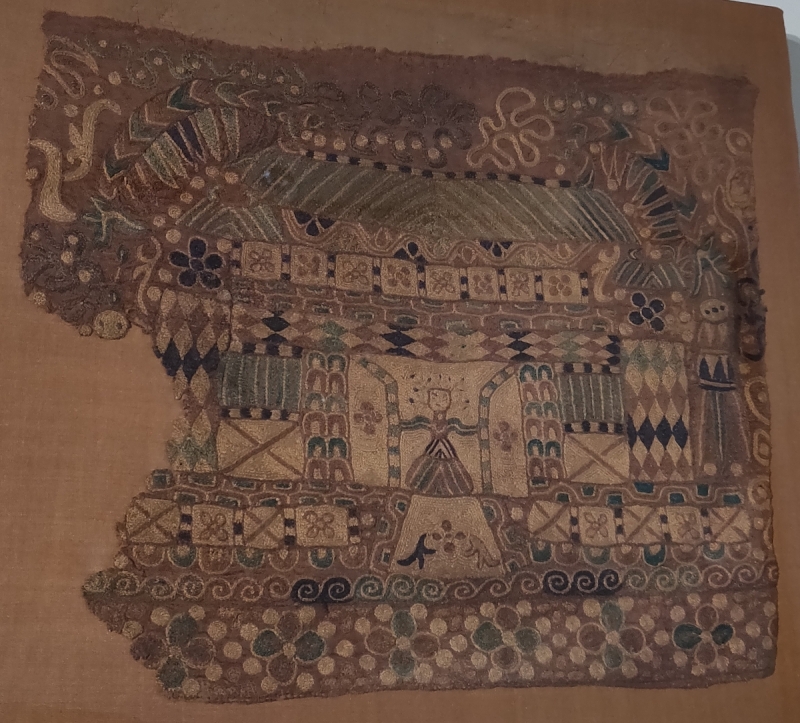 Woman opening the doors of a building North China, Northern Wei dynasty, late 5th century Silk chain stitch embroidery on damask | 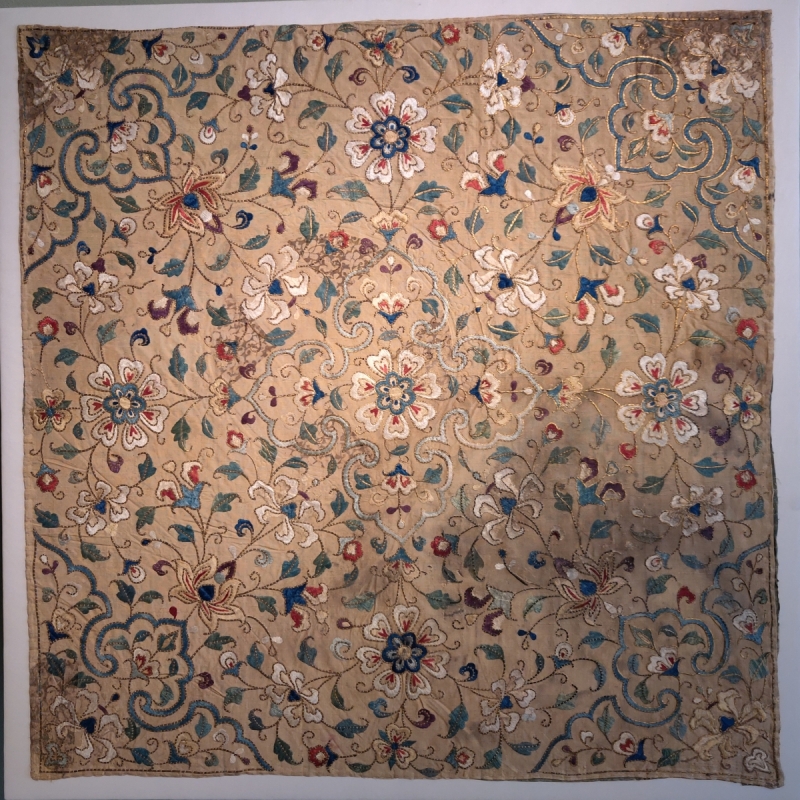 Square panel, perhaps a cover, with original lining and two ties Western Central Asia, 14th century (C14 results: 1278-1412 AD) Floss silk embroidery in long and short stain stitch on a warp-faced silk tabby weave ground, couched gilded animal membrane |
| | |
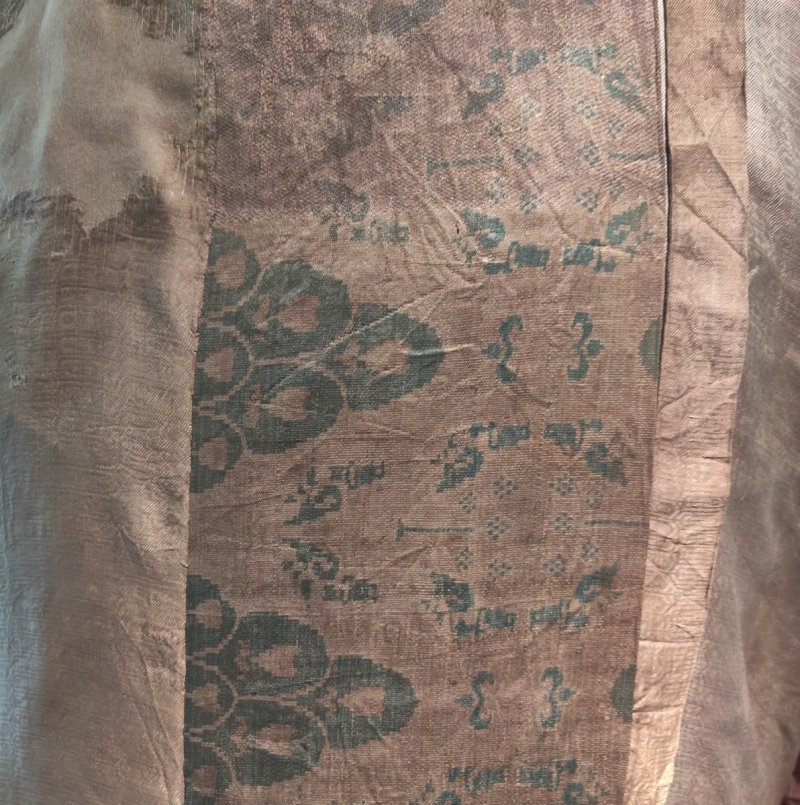 Short jacket or shirt probably intended to be worn under an outer garment Lightweight monochrome silk with applied panels of a thicker polychrome silk with a repeating design derived from contemporary Sasanian samites (such as those found in Antinoe in Egypt) Western China or the Eastern Silk Road, second half of the 6th century AD | 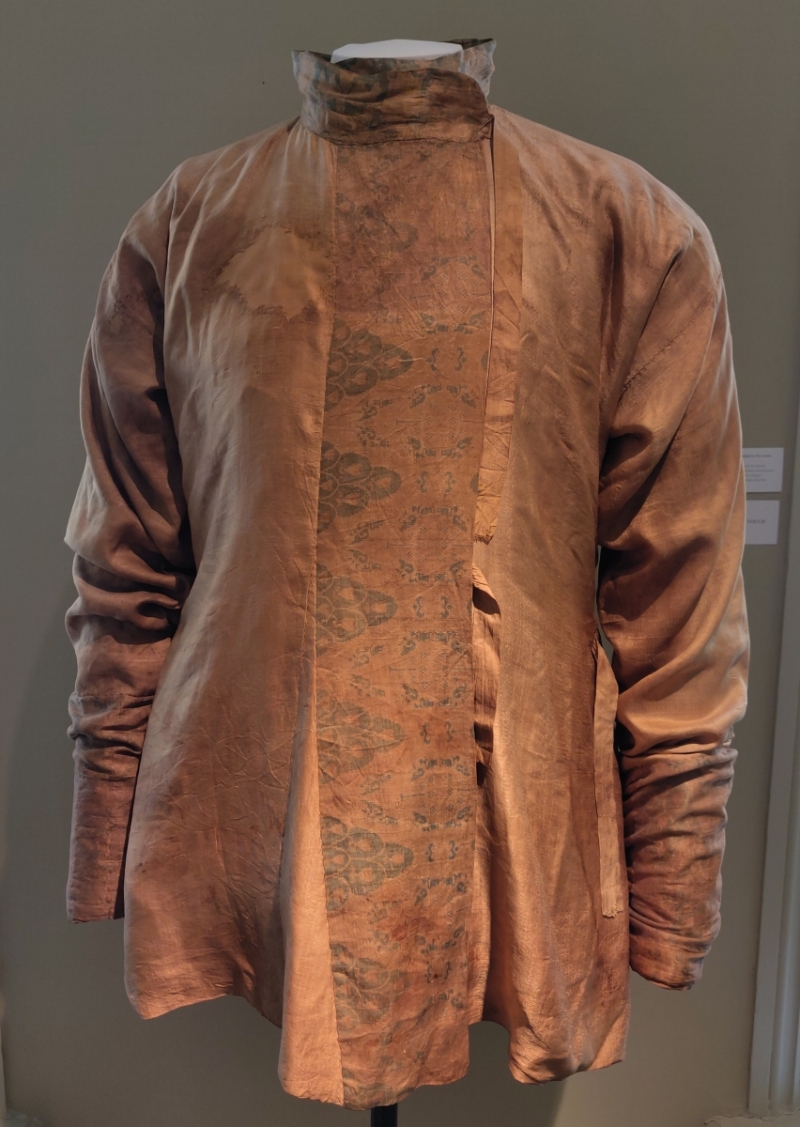 |
| | |
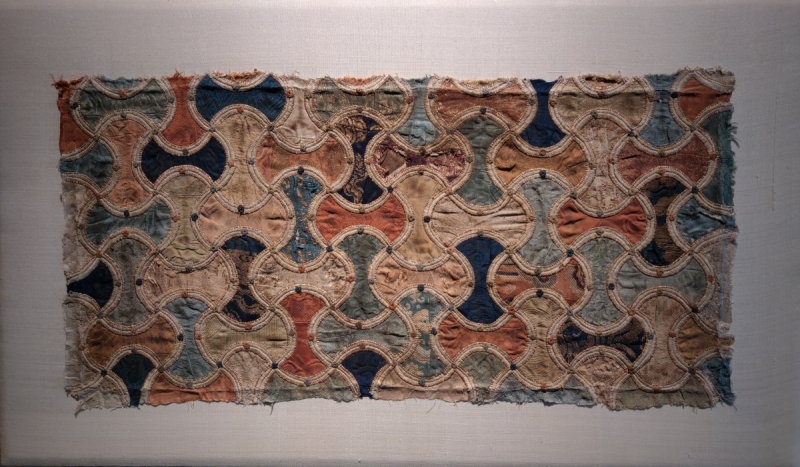 Patchwork silk panel with interlocking ingot design Chinese, Ming dynasty, 14th century Silk, silk damask, flat gold on paper, and silk embroidery | 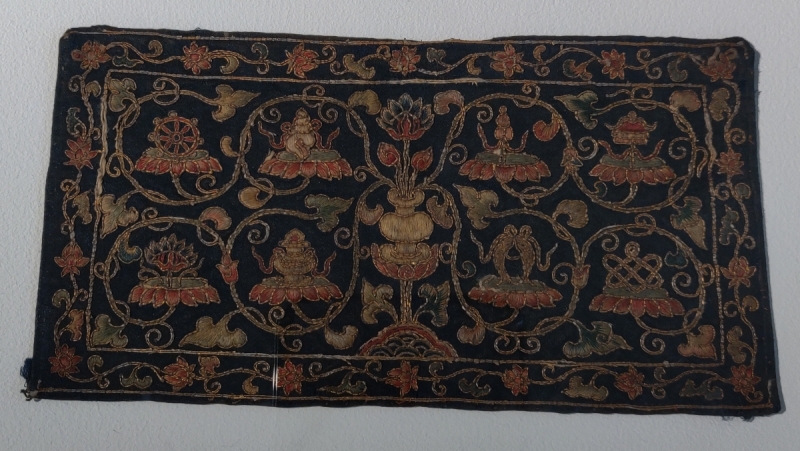 Small panel of embroidery with the eight Buddhist auspicious symbols of Good Fortune Chinese, early Ming dynasty, 1368-1424 Polychrome silk floss in long and short stain stitch embroidered on a deep blue warp faced 3/1 twill weave, the warp yarn of animal hair and the weft of silk yarn. The gilded paper Z-wound around a colourless silk core is couched |
| | |
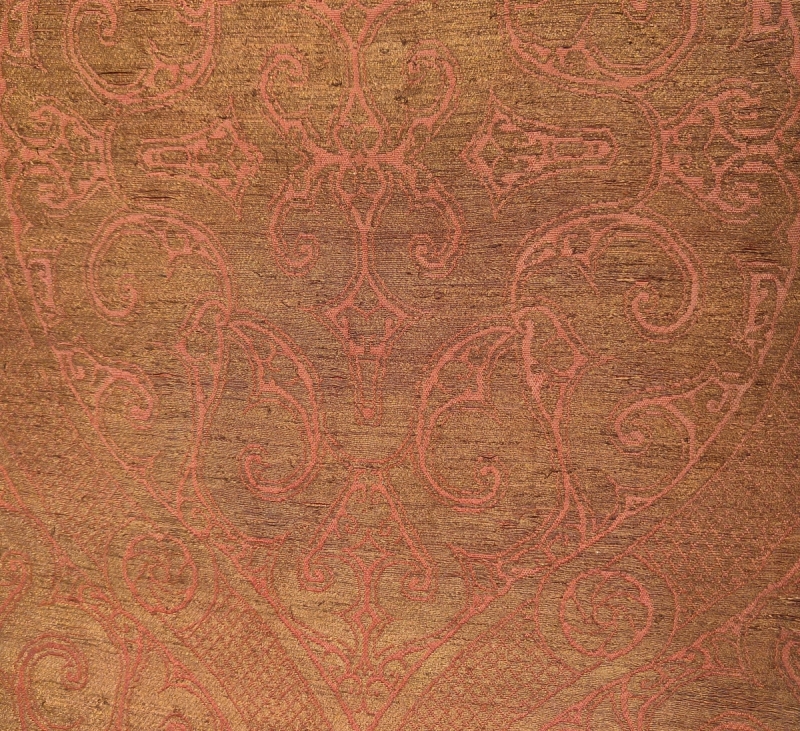 | 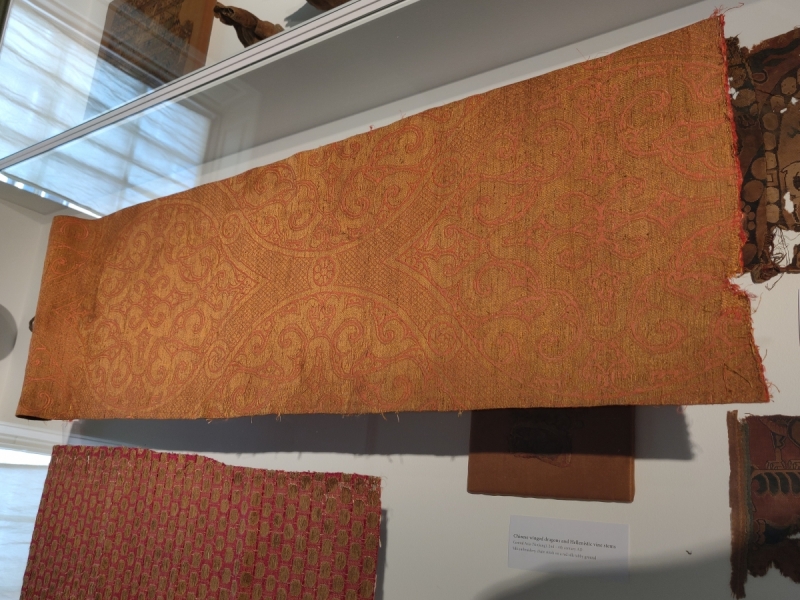 |
| | |
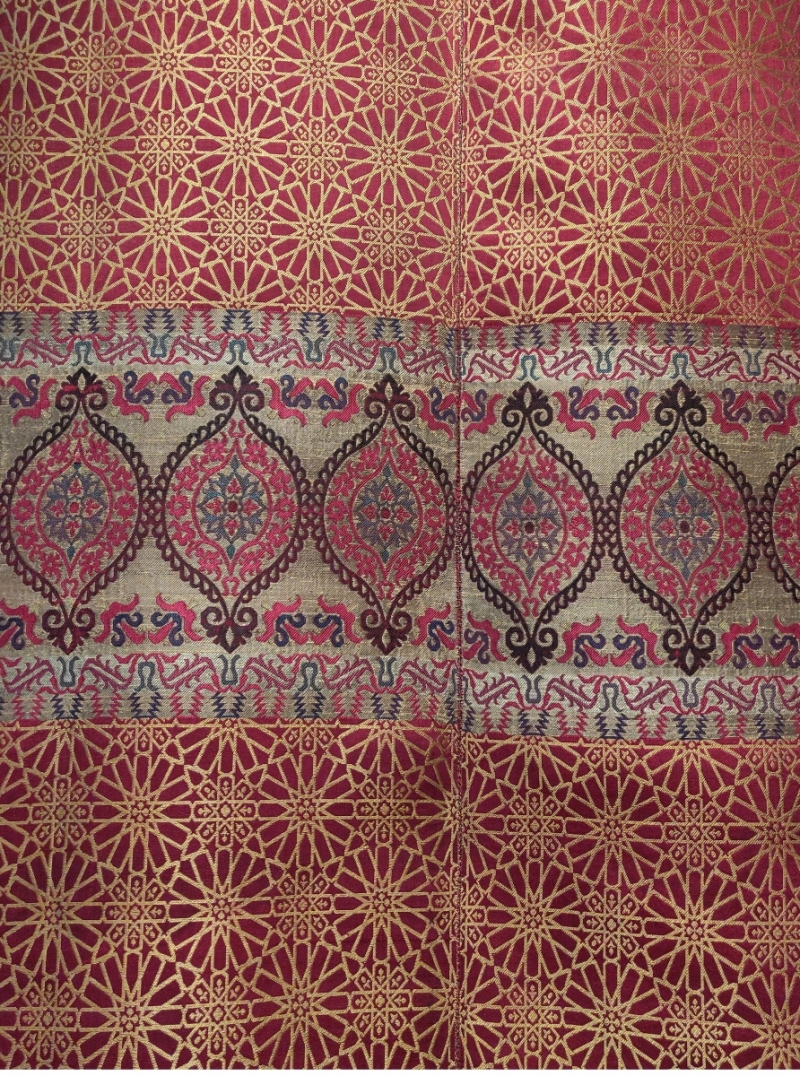 Hanging or curtain Morocco, Fez or Tetouan, early to mid-19th century Two loom widths woven in silk lampas, some bands woven with metal thread (silver lamela wrapped around a silk core) | 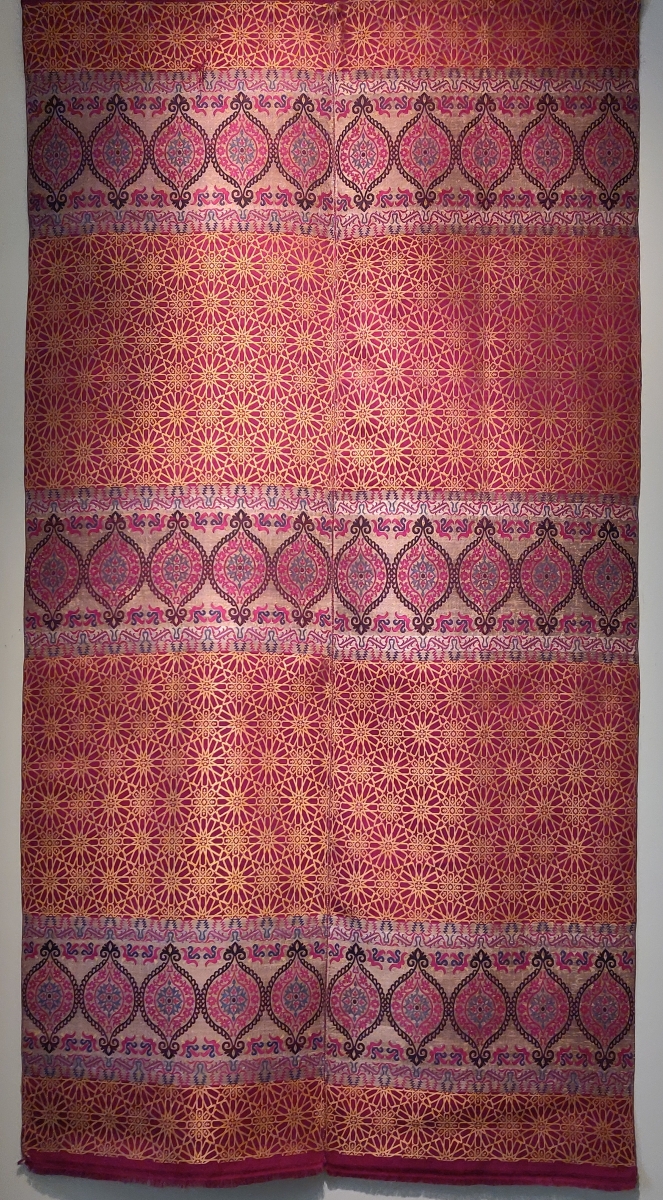 |
| | |
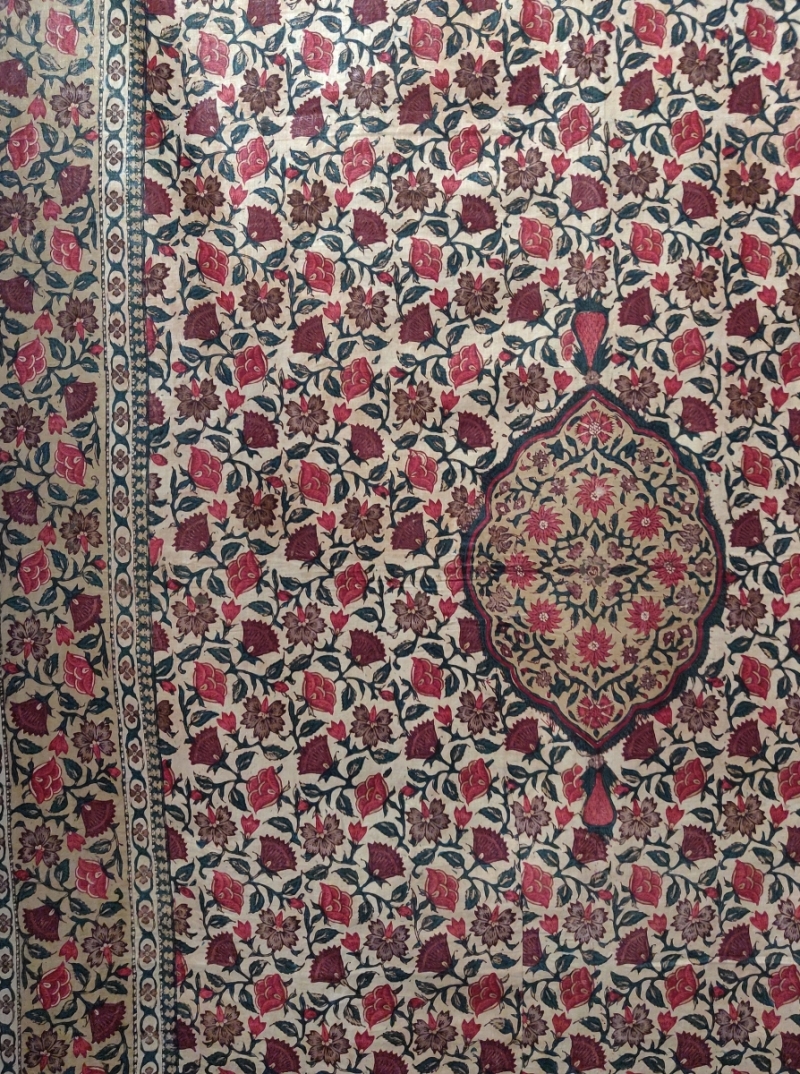 Long length of uncut cloth, possibly for temple or palace furnishings South-east India, Coromandel Coast or Deccan, c. 1800 Cotton; block printed and mordant dyed | 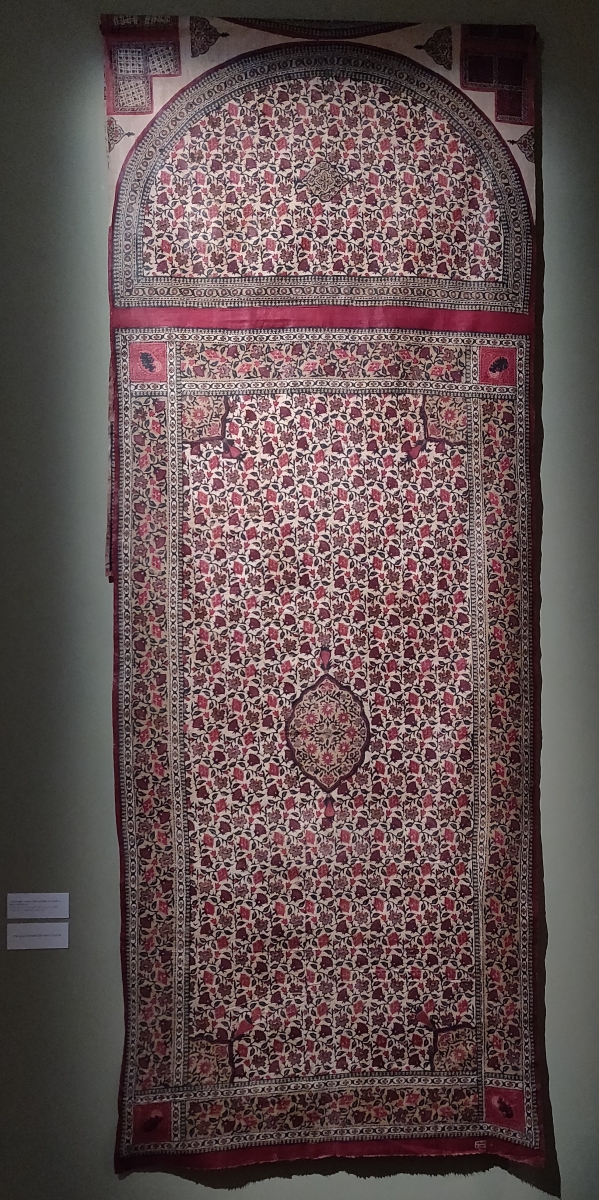 |
| | |
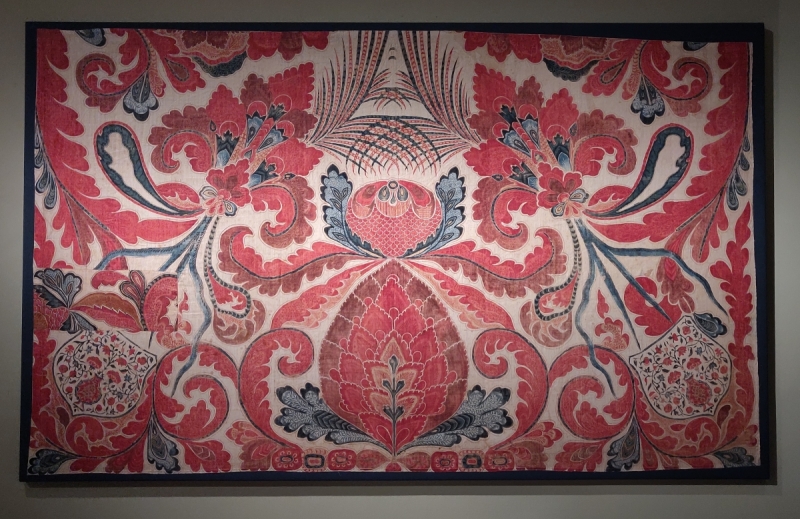 Large panel from a bedcover or hanging (palampore) Coromandel Coast for the European (possibly Dutch) market first half of the eighteenth century Cotton, mordant-dyed and resist-dyed | 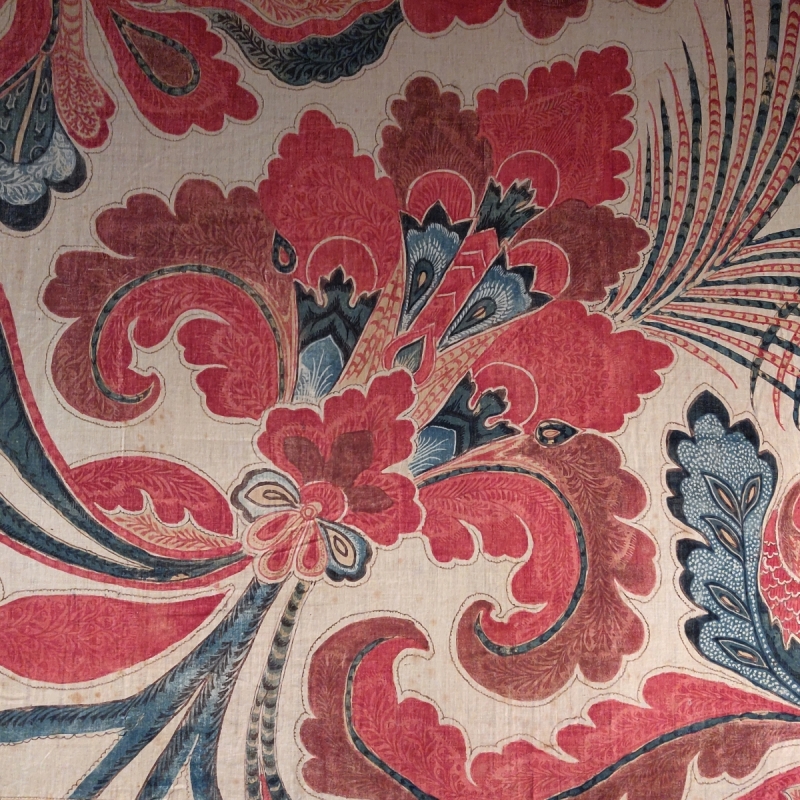 |
| | |
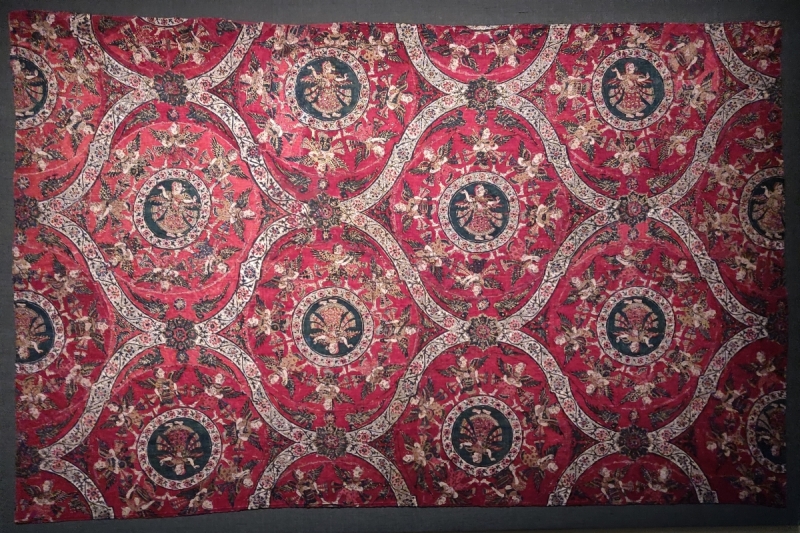 Fragment of a canopy for a Hindu shrine South east India | 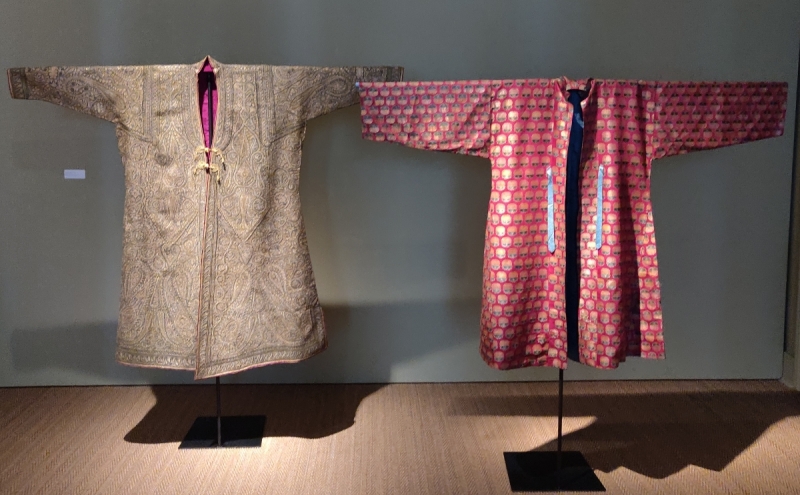 |
| | |
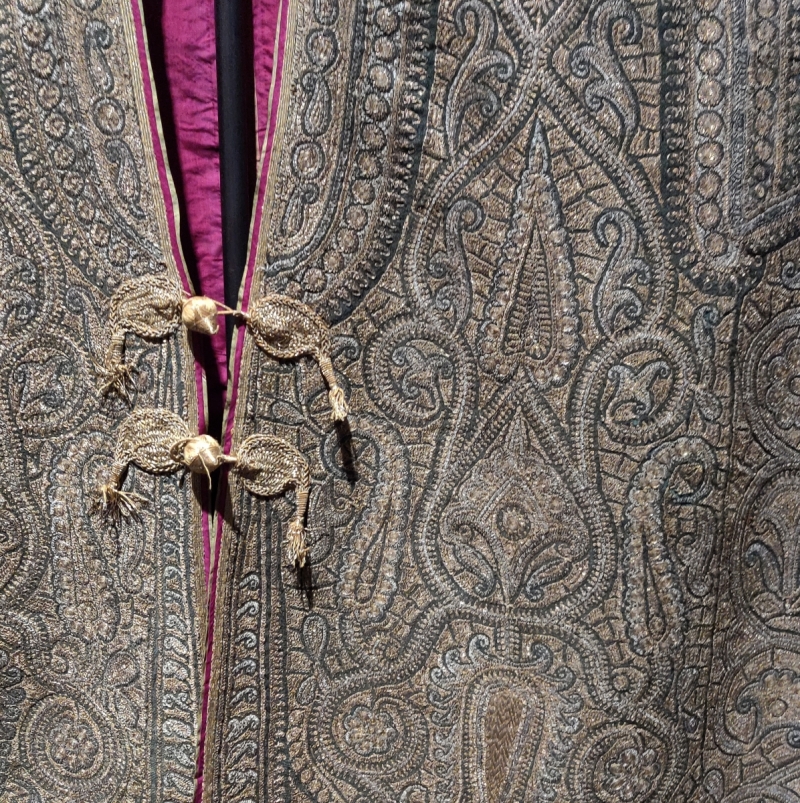 Choga (man's ceremonial coat) Kashmir, c. 1855-75 Kashmir woven wool embroidered with silver-gilt wrapped thread; chain-stitch, couching | 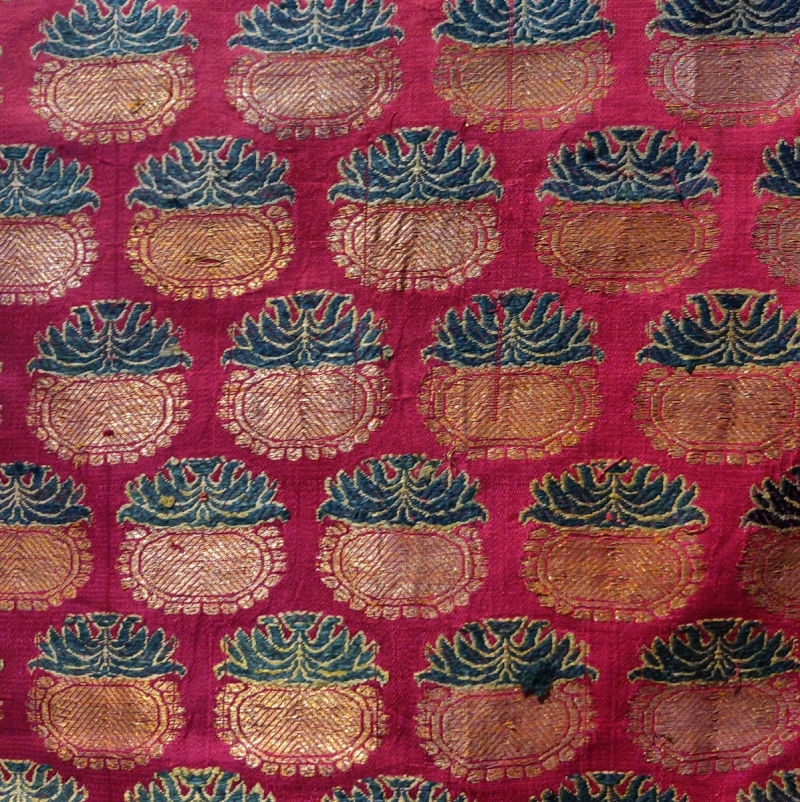 |
| | |
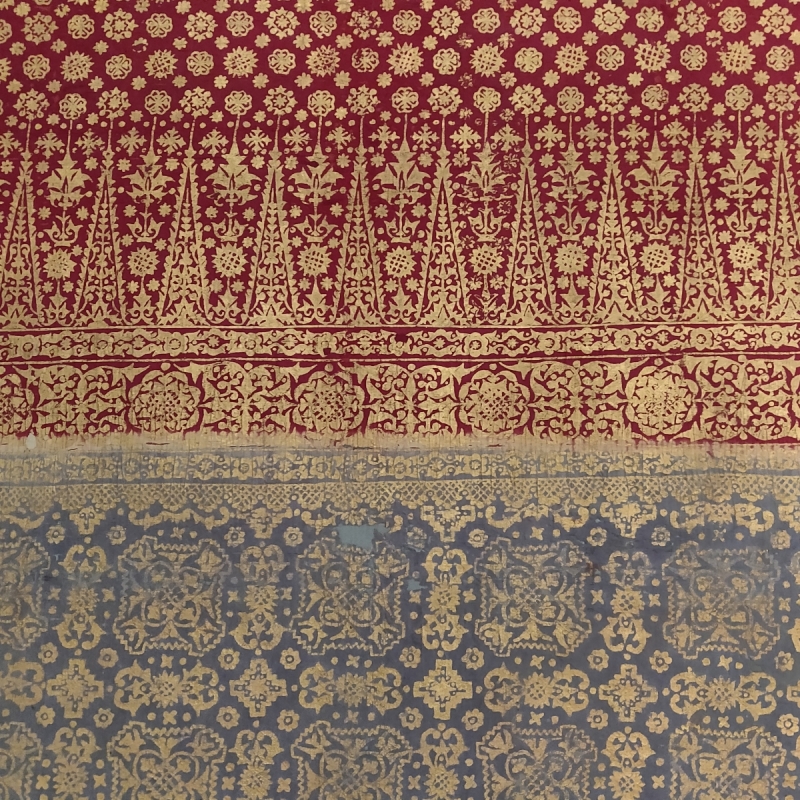 | 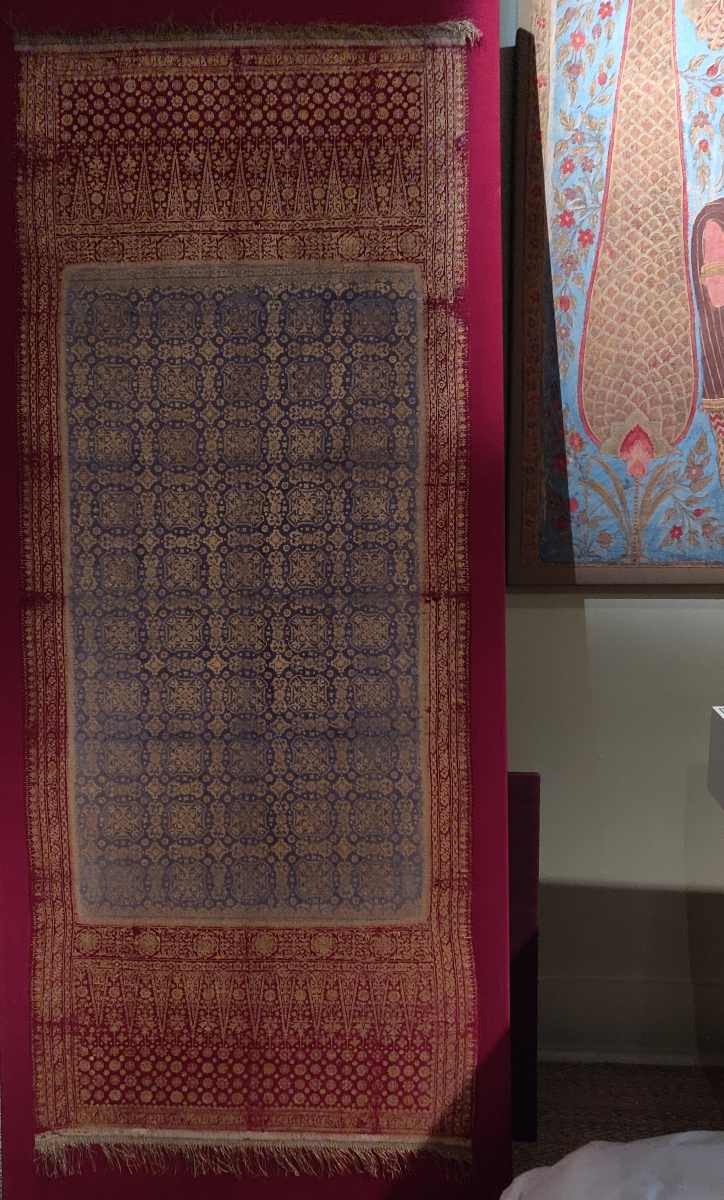 |
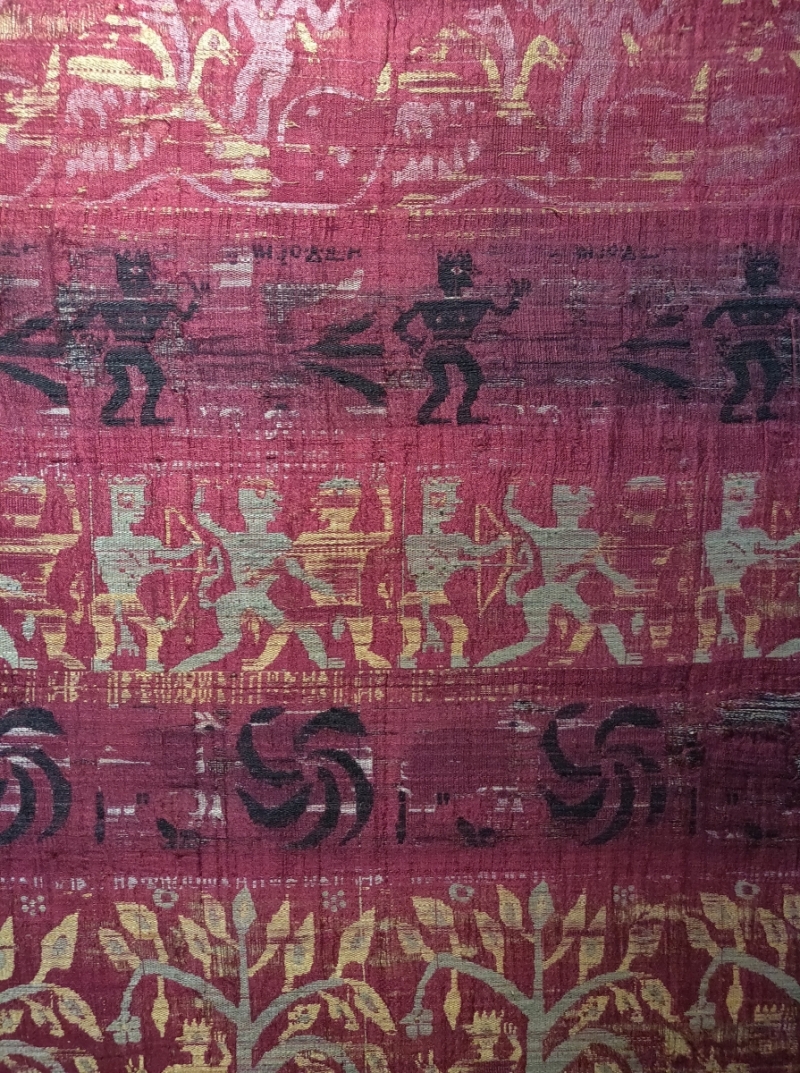 Vaishnavite silk from Assam (East India) Scenes from the Bhagavata Purana and the Ramayana Assam, 17th century Silk lampas | 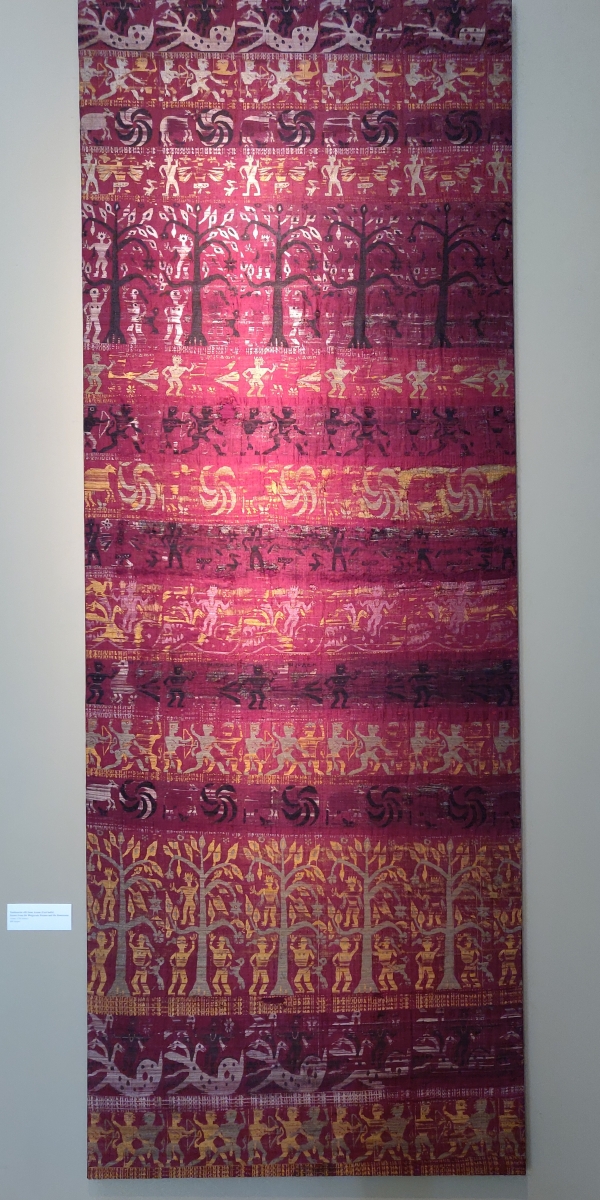 |
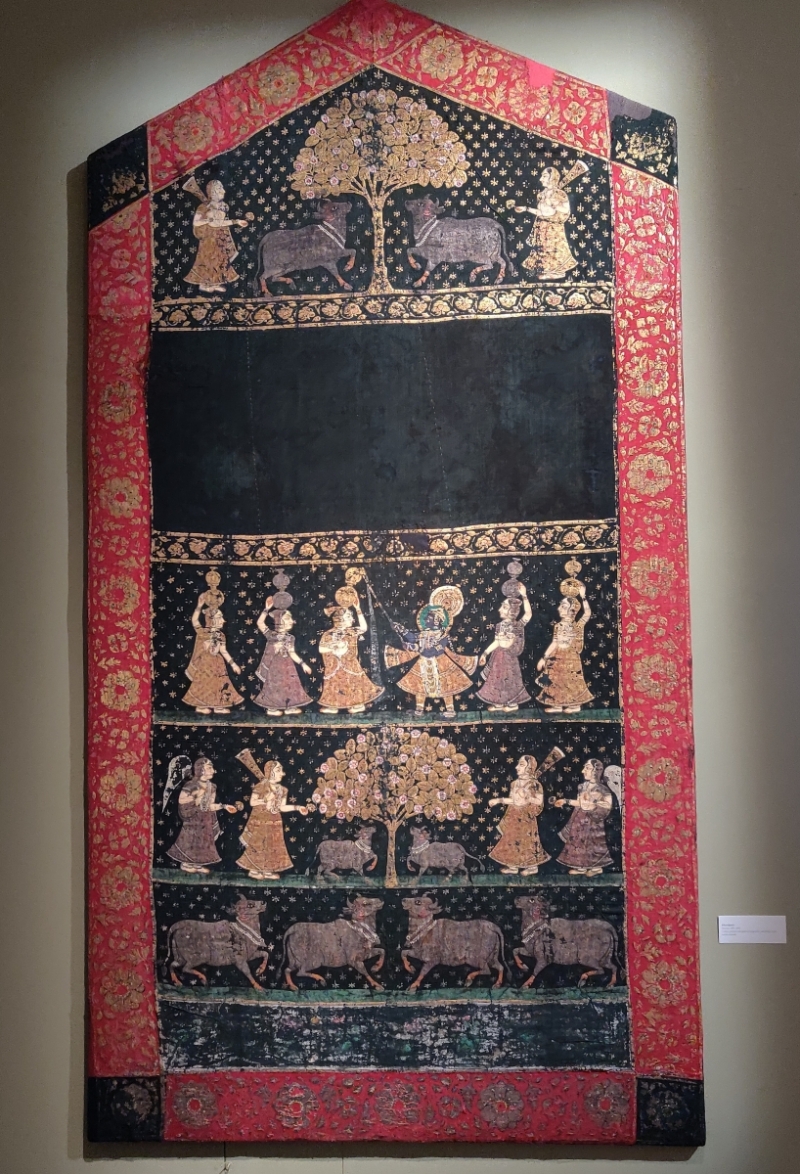 | 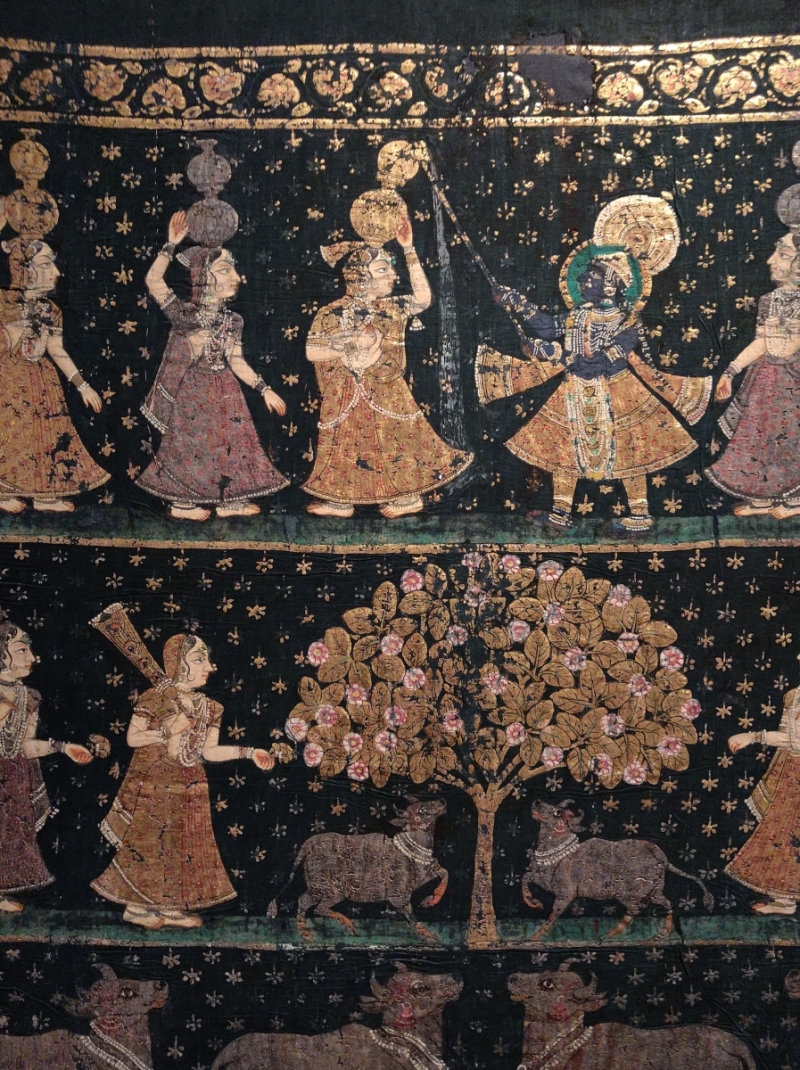 Khandpaat Deccan, 1800-1850 Cotton, painted with gold and pigments, including copper acetate arsenate |
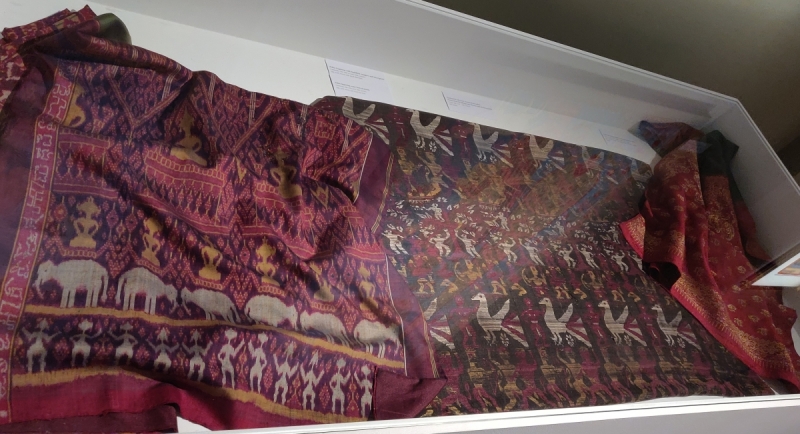 A) Pidan fragment with Buddhist imagery and inscription Cambodia, late 19th or early 20th century Silk; twill-woven weft faced ikat (hol) B) Pidan depicting water festival motifs Cambodia, late 19th or early 20th century Silk; twill-woven weft faced ikat (hol) | 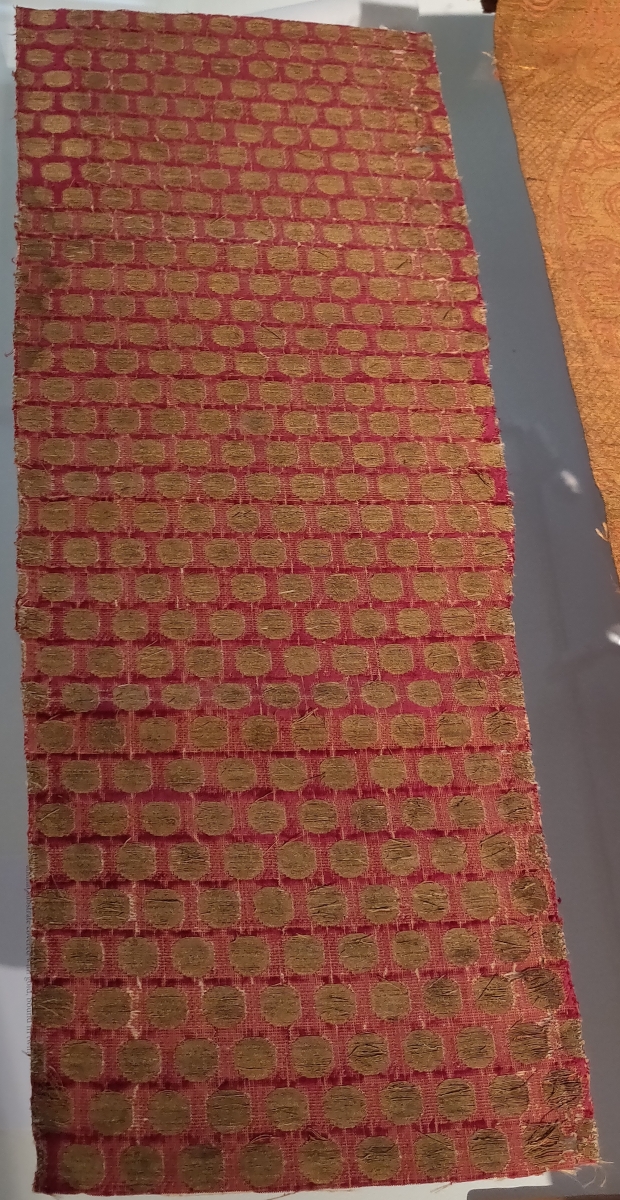 Velvet with gold discs in offset rows Mongol Persia, (Il-Khanid dynasty), possibly Tabriz, c. 1300 (C14 1299-1431 AD) Brocaded velvet, silk and gold thread |
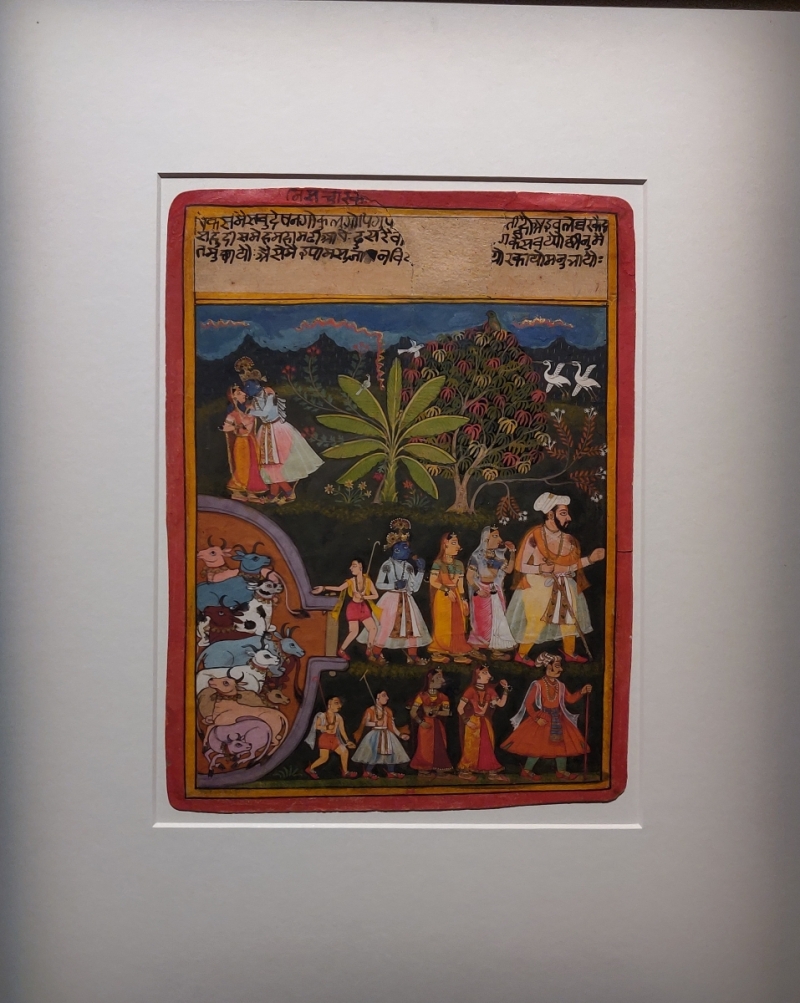 A meeting of lovers in the dark Folio from a Rasikapriya series Mewar, c. 1660 Opaque pigments and gold on paper | 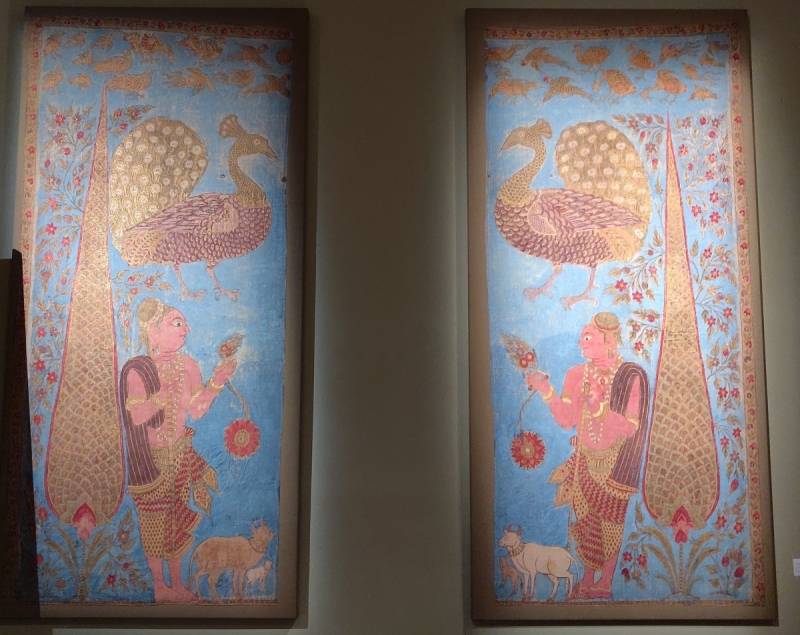 Two pilgrims or guardian figures standing by a cyprus tree South-east India, possibly Masulipatnam in coastal Deccan, mid 18th century Cotton, drawn, mordant-dyed and resist-dyed, profusely highlighted in gold. Blue pigment added later |
| | |
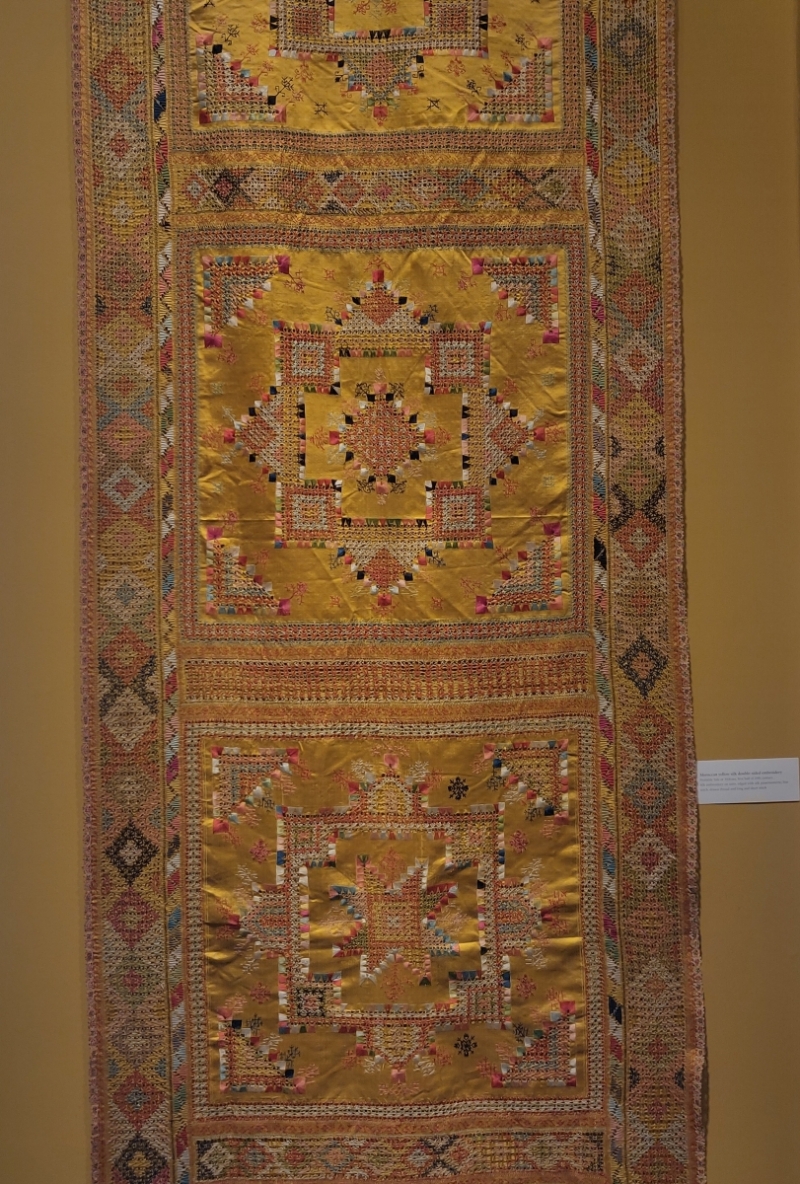 Moroccan yellow silk double-sided embroidery Probably Sale or Meknes, first half of 20th century Silk embroidery on satin, edge with silk passementerie; line stitch, drawn thread and long and short stitch | 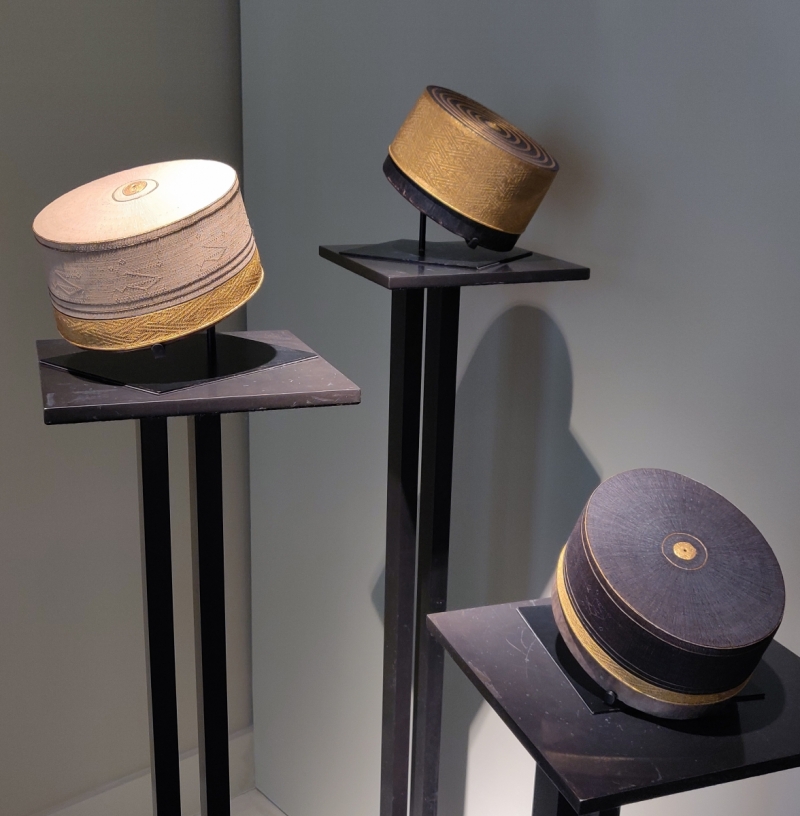 3 Tiga-ringgit songkok Indonesia, Sulawesi, Buginese, c. 1900 Raffia palm leaf fibre, stained brown or left white, fine gold wire and flat gold lamella, basketry weave |
| | |
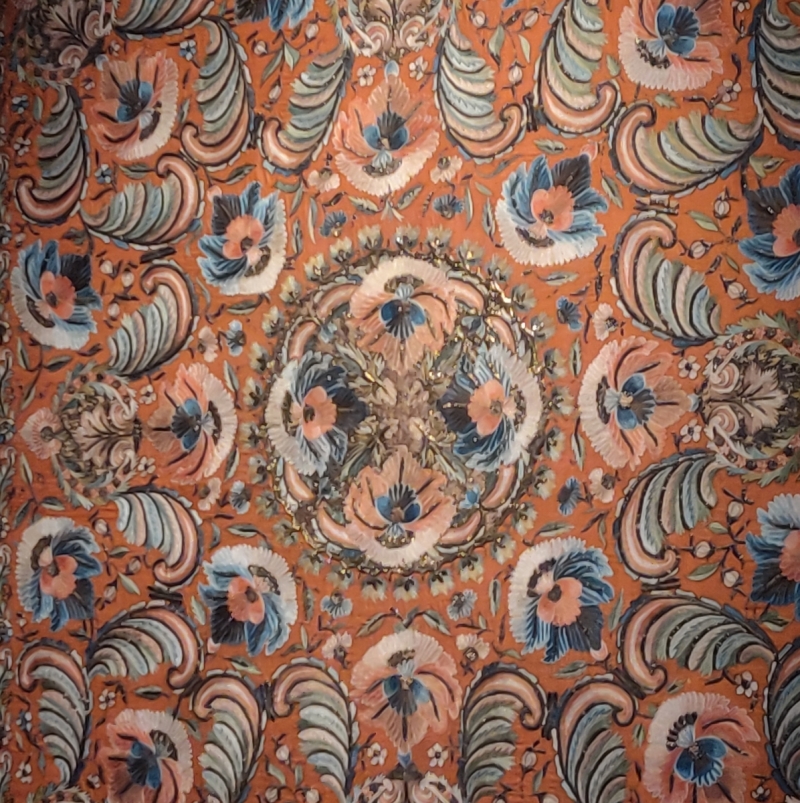 Cover (bohcha) Ottoman Turkey, with European influence, early 19th Wool, silk chain stitch, silver and silver-gilt lamella couched over cotton | 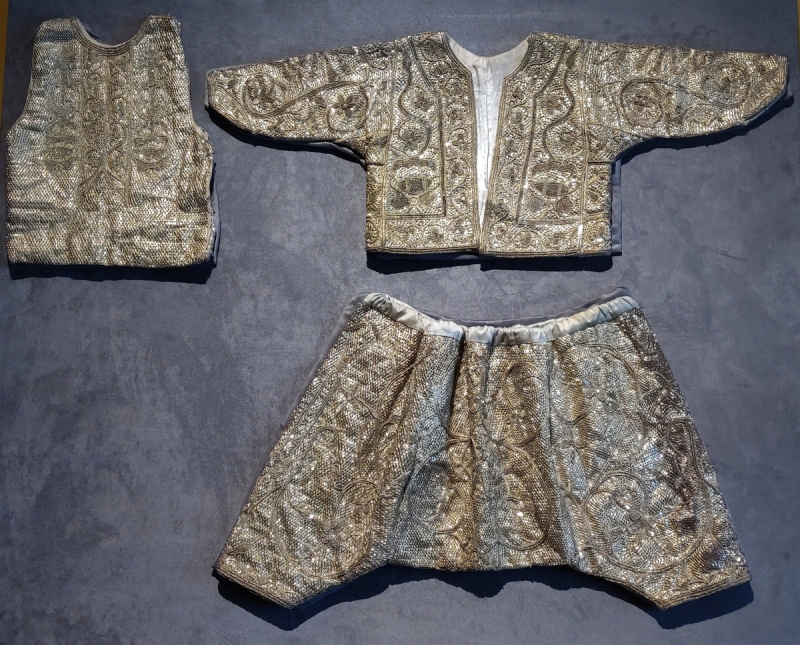 A boy's circumcision costume consisting of a jacket, short pantaloons, and a vest Tunisia, Tunis, first half of 20th century Silver lamella, silver sequins, silver thread, cotton, paper and synthetic satin |
| | |
| | |
| | |
